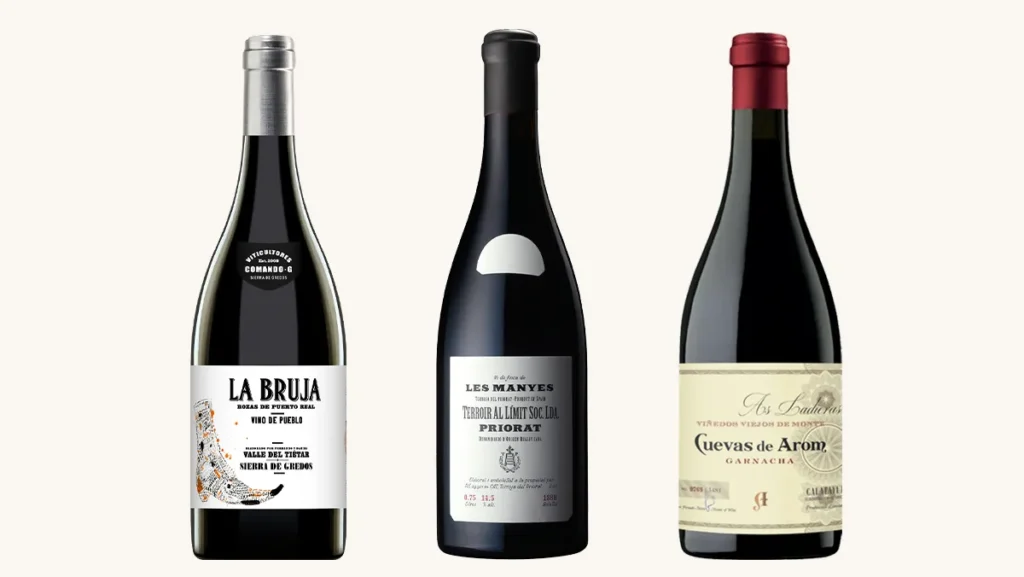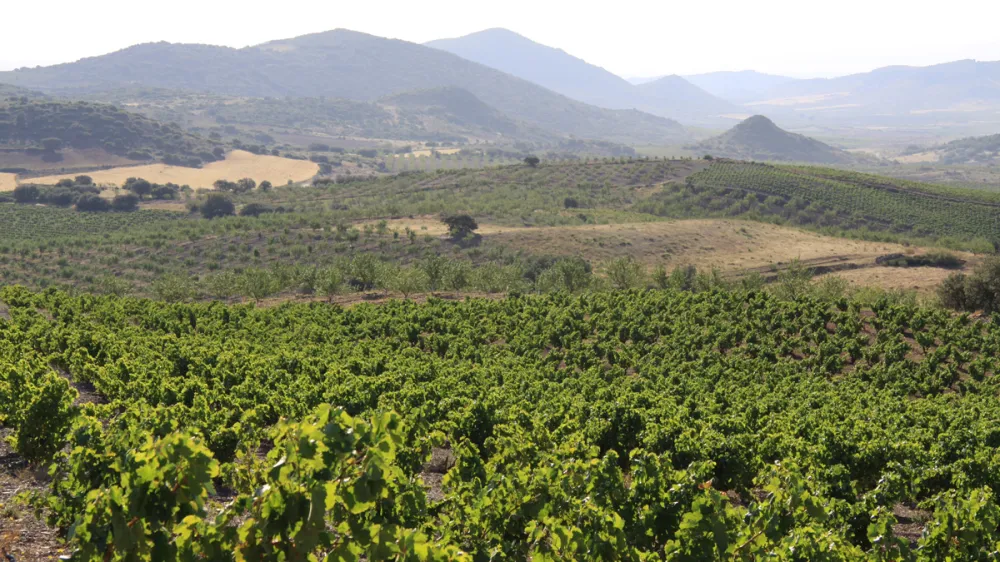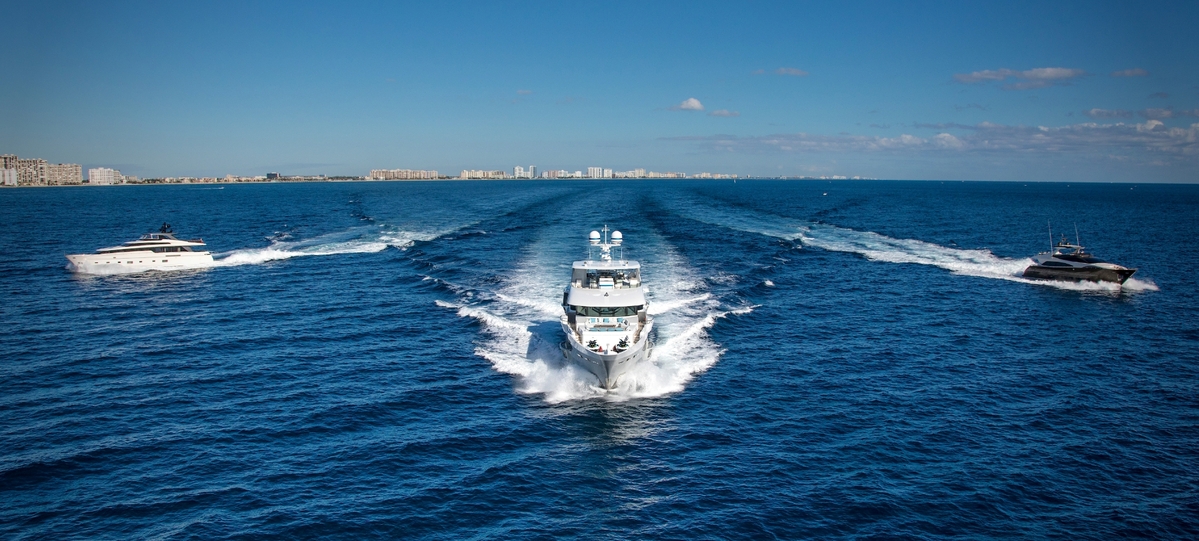The world of wine is abuzz with high-altitude Grenache wines from France and Spain, lauded for their vivacious terroir expression and daring personalities. The distinctive harmony between strength and grace distinguishes these wines from those produced at lower elevations; they are frequently grown at elevations over 2,000 feet. Grenache has always been appreciated for its full-bodied, fruity character, but as winemakers investigate the possibilities of higher vineyards, drinkers are learning about new facets of this grape.
A Revolution in Grenache: The Importance of Elevation
The impact of altitude on wine’s qualities is substantial. The Grenache grape thrives in mountainous regions because of the cooler weather, more sunshine, and more dramatic day-to-night temperature swings that occur there. This stress causes lesser yields, which in turn concentrate the flavors in the grapes, making wines that are more structured, fresher, and more vivid.
The warm-climate grape variety Grenache takes on a whole new layer of complexity when grown at higher elevations. The grapes are able to produce complex aromas and flavors, such spice, mineral overtones, and fresh red berries, when cooler temperatures slow the ripening process. Wines cultivated at higher elevations often have more acidity, smoother tannins, and greater age potential than wines grown at lower elevations.
High-Altitude Grenache Vineyards in France and Spain: Calatayud, Sierra de Gredos, and Priorat in Spain
Priorat, Sierra de Gredos, and Calatayud are some of the Spanish locations where high-altitude Grenache thrives. The region’s steep vineyard terraces and rocky mountain ranges are hallmarks of its world-renowned Grenache wines.
Priorat: The high-altitude vines of Priorat, which are famous for their slate and quartz-rich soils, yield Grenache wines that are strong and structured, displaying flavors of herbs, blackberries, and cherries. Because of the extreme conditions, the grapes are tiny and concentrated, which results in wines that are thick and good for aging.

Located to the west of Madrid, Sierra de Gredos is quickly becoming known for its delicate and youthful Grenache expressions. The wines have a light, airy character with aromas of flowers and minerals driven by the granitic soils and high altitude.
The lesser-known province of Calatayud in Aragón is really home to some of Spain’s highest vineyards. Bright, lively, and characterful Grenache wines with red fruit and spicy undertones are the product of a blend of high elevation, old vines, and rocky terrain.
South of the Rhône and Roussillon in France
French winemakers are increasingly gravitating toward higher vineyards to produce more refined and graceful wines. High-altitude Grenache is a perfect fit for areas like Roussillon and the Southern Rhône.
Vineyards situated at higher elevations in the Southern Rhône are yielding wines that are more complex and well-balanced, in contrast to the region’s reputation for robust Grenache blends. Less weighty, with tangy acidity and more nuanced scents of spice, herbs, and red fruit, Grenache from these vineyards is the norm.
Roussillon: This area, which borders Spain, has a long tradition of growing Grenache grapes. The high-altitude grapes thrive in this region because of the mild Mediterranean environment and rugged landscape. The lively freshness, raspberry, cherry, and hint of saltiness from the adjacent sea characterize Roussillon Grenache wines.
High-Altitude Grenache: Its Distinct Qualities
Extreme growth conditions give high-altitude Grenache its distinctive traits, which contribute to the grape’s allure. Typically, the wines show:
The wines have a vibrant and fresh profile because of the acidity, which is preserved by the cooler temperatures at higher altitudes.
Flavor Concentration: Because the plants are under more stress from the high altitude and the rocky terrain, the berries are smaller, but the flavor is more concentrated.
Refined tannins and a lighter body characterize high-altitude Grenache wines, which are elegantly structured and perfect for combining with a variety of cuisines.
The potential for these wines to age gracefully is high, and with time, they tend to get deeper and more nuanced.
The Reasons Why Wine Enthusiasts Are Fixated on High-Altitude Grenache
Because of its inherent terroir expression, high-altitude Grenache is gaining popularity among wine connoisseurs. Those looking for something fresh and interesting will love these wines because they provide a contemporary spin on a traditional grape variety. Because high-altitude vineyards tend to have a more natural equilibrium between the plants and their environment and typically need fewer chemical inputs, they have become increasingly popular in recent years, which is likely related to the increasing interest in sustainability and little intervention in winemaking.
Final Thoughts: Grenache’s Future
An intriguing new frontier in the wine industry is the high-altitude Grenache from France and Spain. Wine enthusiasts should anticipate the release of more lively, terroir-driven vintages as vintners delve further into the possibilities offered by these elevated vineyards. For their one-of-a-kind blend of youthful energy, nuance, and grace, these high-altitude expressions are a must-try for every Grenache enthusiast or novice.








